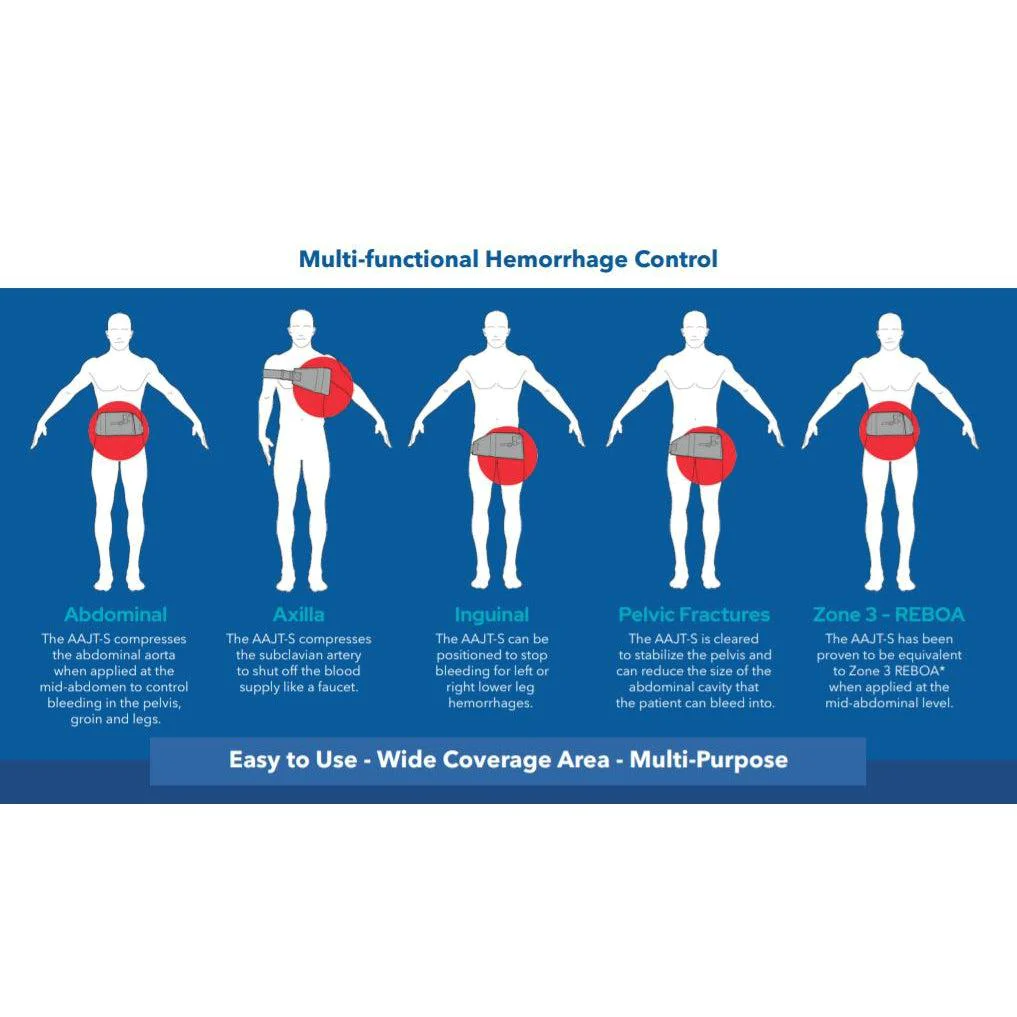Recent wartime experience has demonstrated that tourniquets can save lives. Yet many common military and civilian injuries, particularly armpit and groin injuries and pelvic fractures, remain difficult to treat in the field. Patients with these injuries are at high risk for bleeding to death. Since 2012, special operations forces worldwide have been using an advanced tourniquet device to treat these difficult bleeding injuries — the Abdominal Aortic and Junctional Tourniquet™ (AAJT). Independent research has shown that the AAJT effectively occludes blood flow to the pelvis and the extremities.
Dr. Croushorn deployed to Iraq in 2004 as a flight surgeon with the Mississippi National Guard. He later worked with U.S. Special Operations units, where he developed a particular interest in bleeding control, specifically, massive bleeding below the waist. At the time, one of the newer ideas for controlling lower-body bleeding was to compress the aorta by pressing a knee into the mid-abdomen. After Dr. Croushorn transferred back to the U.S., he supervised a group of resident researchers who validated this technique in a swine model. He and a colleague soon began developing a device to replicate the knee effect.
According to Dr. Croushorn, the AAJT-S mimics the effect of resuscitative endovascular balloon occlusion of the aorta (REBOA). “Unfortunately, REBOA is limited right now to hospital use by a physician — and most patients who might benefit from it will bleed out before they even reach the hospital.”
Balloon occlusion of the aorta was advocated by Hughes as early as the Korean War. REBOA Resuscitative Endovascular Balloon Occlusion of the Aorta is a minimally invasive technique using a balloon catheter to temporarily occlude large vessels in support of hemorrhage control. REBOA is very attractive as a method of hemorrhage control because it can provide total occlusion of the aorta either just above the diaphragm (Zone I), to control intraabdominal bleeding, or above the aorto-iliac bifurcation (Zone III), to control bleeding in the pelvis. The REBOA catheter is inserted via a femoral artery sheath which can be placed via palpation of a pulse, using ultrasound, or by cut-down. It provides an alternative to aortic clamping or compression via a thoracotomy or laparotomy.
Penetrating injuries of proximal femoral and iliac vessels are a common cause of death on the battlefield. Previous studies have shown that by applying between 80 to 140 pounds of pressure externally over the distal abdominal aorta, flow can be ceased in the common femoral artery. It has also been demonstrated that in a porcine model an externally applied pneumatic abdominal aortic tourniquet can occlude the aorta and inferior vena cava for 60 minutes without bowel injury or elevations of potassium. (M. Lyon, 2011)
To determine the effectiveness of the AAJT to stop blood flow in the proximal femoral artery (PFA), and the axillary artery (AA). (Lyon, Johnson, & Gordon, 2015)The AAJT consists of a wedge-shaped bladder and integrated strap. The bladder has an integrated manometer, which is used to measure the pressure in the bladder. For the AA, the AAJT was placed over the axillary junction at the anterior axillary line with the strap placed across the contralateral shoulder. For the PFA, the AAJT bladder was placed over the right groin with the strap positioned across both femoral trochanters.
Video of application and use https://www.youtube.com/watch?app=desktop&v=36-mIuIKXmY
Bibliography
Croushorn, D. (2019, Aug 16). Combat tested abdominal/junctional tourniquet. Trauma System News.
CW, H. (1954;36(1):65–68. ). Use of an intra-aortic balloon catheter tamponade for controlling intra-abdominal hemorrhage in man. Surgery.
Lyon, M. L., Johnson, D., & Gordon, R. (2015). Use of a Novel Abdominal Aortic and Junctional Tourniquet to Reduce or Eliminate Flow in the Brachial and Popliteal Arteries in Human Subjects. Prehospital Emergency Care, 19(3), 405-408. Retrieved 10 8, 2023, from https://ncbi.nlm.nih.gov/pubmed/25494652
M. Lyon, R. B. (2011, June). Use of the Abdominal Aortic Tourniquet to Reduce or Eliminate Flow in the Common Femoral Artery in Human Subjects. p. DOI:https://doi.org/10.1016/j.annemergmed.

